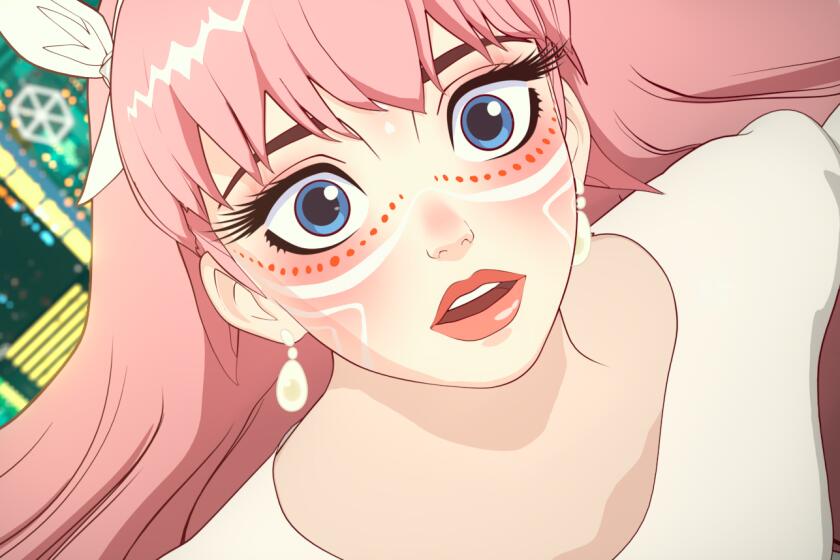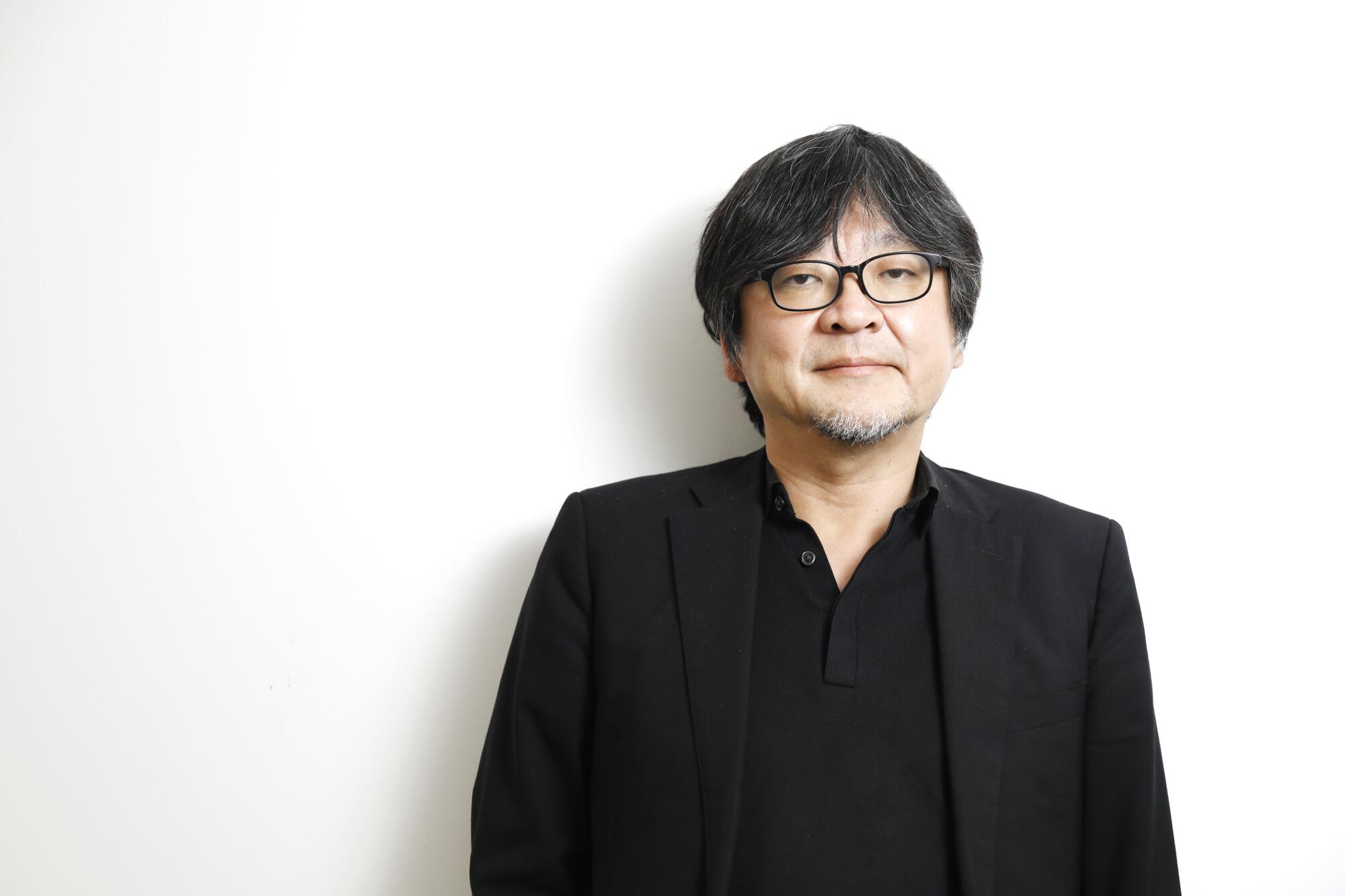
- Share via
Long before cellular devices became nearly vital, Mamoru Hosoda had already found a creative well in virtual universes.
The Japanese director, who specializes in whimsical stories about complicated family dynamics and received an Oscar nomination for his 2018 animated feature “Mirai,” first engaged with the online transmutation of our lives in the late ‘90s and early ‘00s. With multiple projects within the popular “Digimon” media franchise, centered on digital creatures populating a parallel realm, he honed his directorial abilities.
“I’m probably one of the few, maybe the only director, who’s been taking on the theme of the internet for 20 years in various projects,” said Hosoda via an interpreter during a recent interview in Los Angeles.
While Hosoda’s mesmerizing narratives often feature alternative realities and characters concealing their true selves, his preoccupation with the internet as we know it today came to the foreground in 2009’s “Summer Wars,” an exhilarating film focused on young people trying to prevent catastrophe in the real world by defeating a malignant force in an online battle.
This cutting-edge fairy tale is the most ambitious work yet from Mamoru Hosoda, the director of animated films including “Mirai,” “Wolf Children” and “Summer Wars.”
Hosoda’s latest conceptually daring adventure, “Belle,” now in theaters, situates the old-age fairy tale of “Beauty and the Beast” within the context of virtual interactions. Sheepish teenager Suzu — voiced in Japanese by Kaho Nakamura and by Kylie McNeill in the English dub — lacks confidence at school, while at home communication with her father is strained.
But in the world of U — a digital platform in which 5 billion users take the form of vivid avatars that manifest their inner qualities — she transforms into Belle, a ravishing pop star that entrances users until a beastly dragon seemingly threatens the balance of this computer network kingdom. “I thought that the duality between reality and the internet world versus the duality of the beast made for an interesting contrast,” Hosoda explained.
Years before beginning production on “Belle,” Hosoda met the legendary Glen Keane, who served as supervising animator Disney’s 1991 adaptation of “Beauty and the Beast,” specifically for the Beast character. “I wanted to make sure I got his blessing when I knew I wanted to make my own version,” noted Hosoda. More recently, the two met again. Keane, who had seen “Belle,” congratulated him on adapting the famous fable for the digital age.
The Times spoke with Hosoda about taking inspiration from Disney, the attributes and deficits of online life and the special role music plays in the unique world of “Belle.”
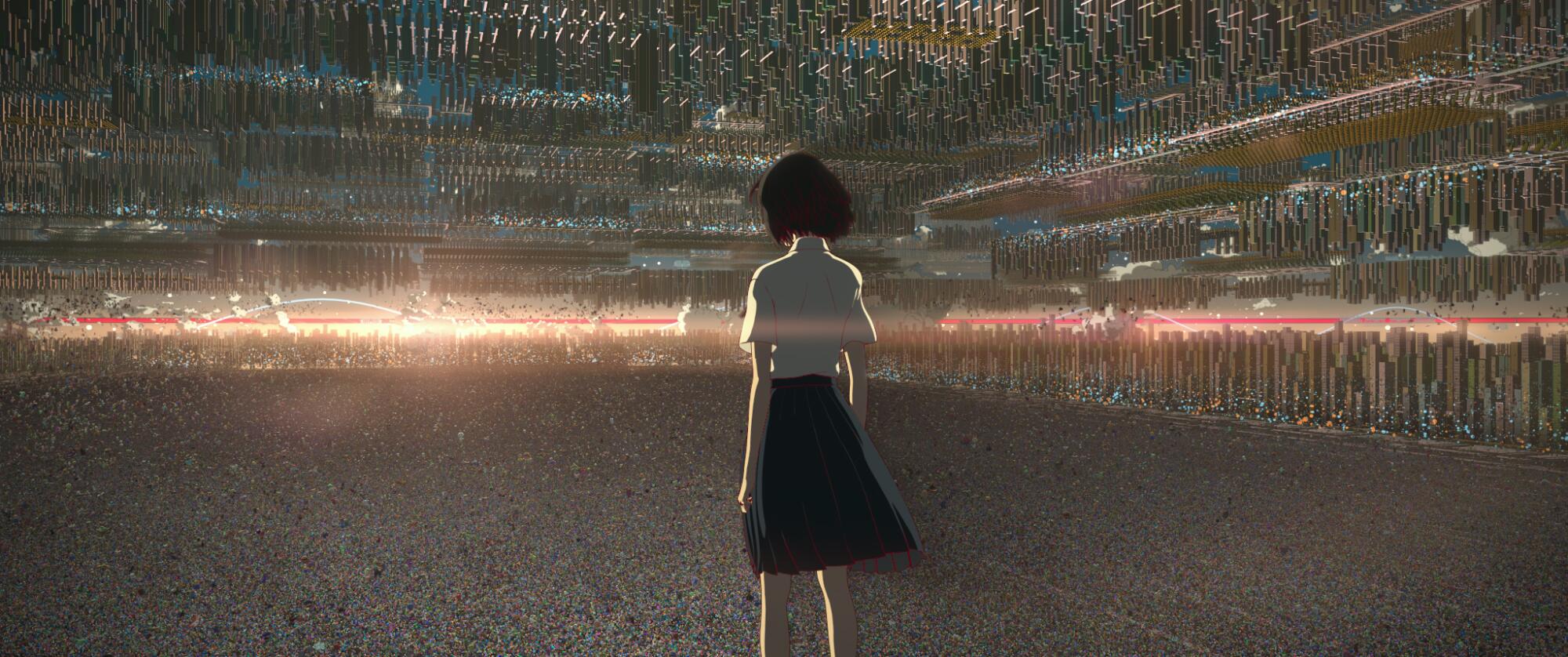
How do you think our relationship to the internet has changed in the years between your work on “Summer Wars” and “Belle,” given that both films partly take place in an alternative online world?
There’s certainly been a big shift in how we relate to the internet. Twenty years ago, when I directed “Digimon Adventure,” it seemed like a space where a lot of the younger generations would reside and smash the old establishment way of doing things to form a new world for themselves. And 12 years ago, when I directed “Summer Wars,” a lot more people were able to access the internet and it became a little bit more common, but it still remained this kind of open and hopeful space for new types of innovation and creativity.
But today, when I’ve directed “Belle,” almost everyone is on the internet and it’s a necessity for daily life in many ways. A lot of those more negative aspects of our own society have been brought into the world of the internet, like toxic behaviors and a fake news. That’s how I’ve seen the internet shift over the years.
What’s your personal relationship to social media?
In the beginning, I had a Twitter account myself, but nowadays I don’t post on it too much, if at all, because rather than tweeting or speaking on an individual level on Twitter, I’d much rather focus on creating new stories and projects. But looking at my children and the way that they use the internet, I think a lot of the younger generations are not going to be able to detach themselves from a very internet-centric culture. So taking into consideration their future and how they must face these two worlds of reality and the internet, I wanted to make a film like this.
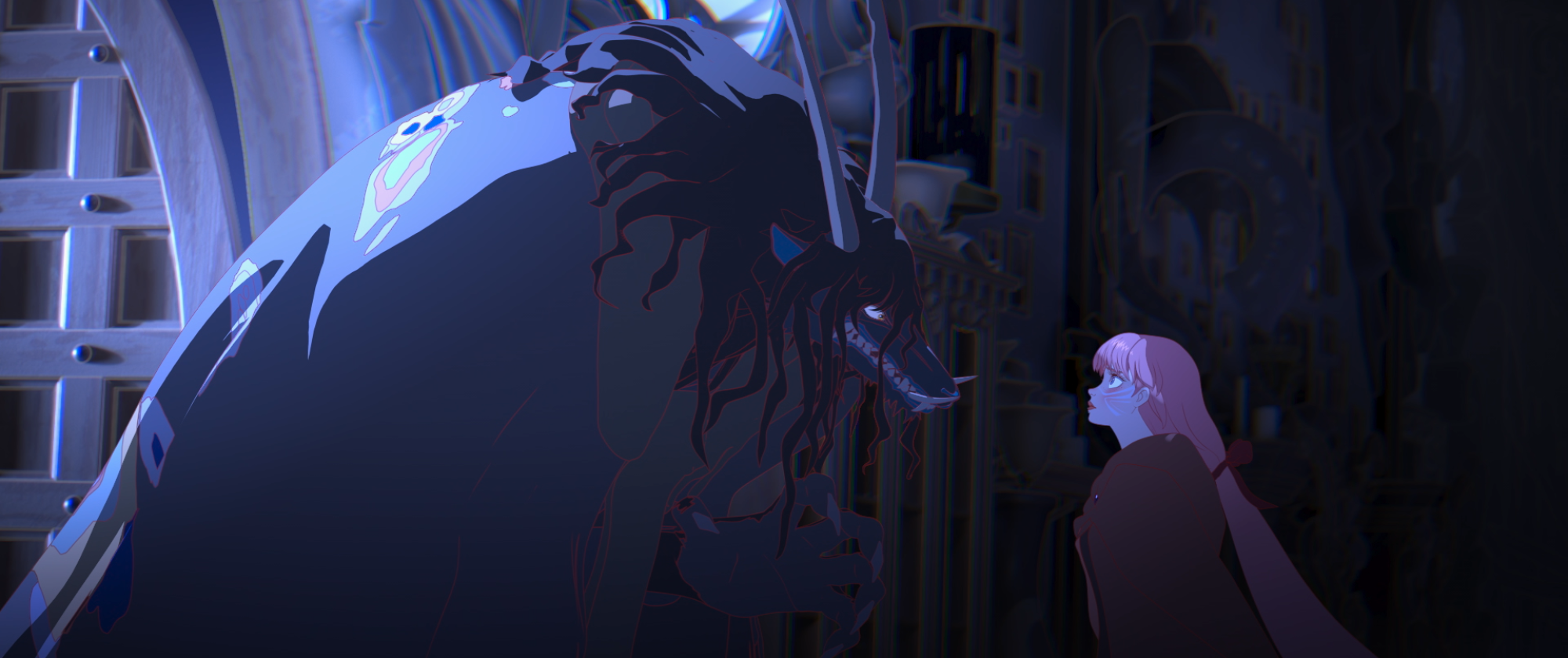
Tell me about the first time you watched the Disney version of “Beauty and the Beast.” Why did it become such a major source of inspiration for you?
I really love the story of “Beauty and the Beast,” especially how these values seem to be inverted, where something that may appear beautiful could possibly be ugly and vice versa ... When I was in college, I saw the Jean Cocteau version of “Beauty and the Beast” from 1946. I was really moved by it. But after graduating college, I joined a company called Toei Animation ... and it was a bit of a struggle, I confess. It was back in 1991. Because of how challenging the job was, I contemplated quitting and perhaps shifting industries or going into something else besides animation.
But then in 1992 when Disney’s “Beauty and the Beast” was released in Japan, I was absolutely amazed by what that movie was able to accomplish. Here I was almost losing my passion toward animation, but this movie gave me that second wind to stick it out and try hard and see what I could do in the world of animation. Just knowing what kinds of expressions were possible through animation helped me.
I was still fresh out of college and didn’t have much money, but I saved up and bought the box set of “Beauty and the Beast” that came with extra behind-the-scenes footage. In one of those extras was Glen Keane who showed how he would do the key frames in the movie. I really admired him ever since then. I thought to myself, “One day, I want to make my own interpretation of ‘Beauty and the Beast.’”
On “Belle,” you decided to work with Jin Kim, the South Korean animator and character designer for Disney films such as “Hercules,” “Fantasia 2000” and “Tangled.” What was it about him and his artistry that you thought worked for this project?
We wanted to work with people who came from many different backgrounds and Jin Kim is someone for whom I have a lot of respect, and I think the way he illustrates and can draw is just absolutely beautiful. Sometimes in interviews I get asked, “Oh, did you hire Jin Kim cause you wanted your movie to look more Disneyesque?” I disagree and say, “No, I wanted to look more Jin Kim-esque — not the entire brand of Disney, but specifically his drawings and how he is able to bring out those characters.”
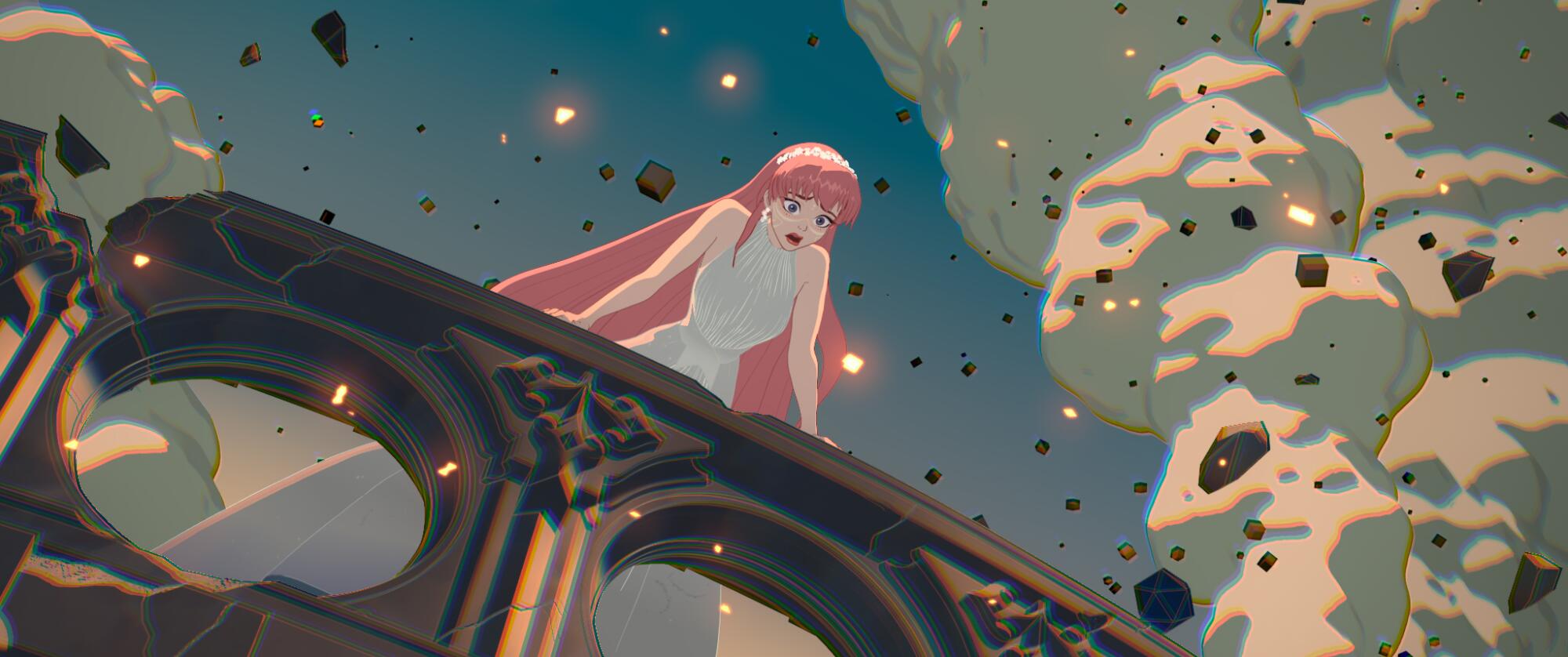
Kim designed the title character Belle, a radiant pop star and Suzu’s alter ego. What aesthetic and emotional traits did you discuss for her?
We didn’t talk too much about the character’s appearance or exterior. We were more focused on what Suzu had inside of herself and what her other possibilities may look like, as someone who shares the same soul as Suzu, but has a very different kind of visual expression.
At the time, our Japanese character designer, Hiroyuki Aoyama, had already designed Suzu, the character in our reality, the real world. Jin Kim had that at as a visual reference and a lot of the discussion centered on what would her mental avatar or projection feel like. She is someone who on the outside may seem like she has really low self-esteem, but when she is able to attain that freedom in another form, that’s the soul that we want to depict.
Tell me about finding Eric Wong, who you hired to help you create the imposing and free-flowing digital world of U. What were some of the key ideas that influenced the design?
The story of “Belle” is very much about this unknown girl from a very suburban town in the countryside of Japan and how she rose to international stardom. Perhaps I was influenced by the story myself. I believed that the designer able to accurately represent the visual look or visual expression of what the world of U would look like would be found on the internet. So I was just searching on the internet for quite some time and came across Eric Wong’s portfolio online.
At the time I had no idea who he was, where he was from, or if he even had moviemaking experience. We got to talking and I found out that he’s based in London. He is a 27-year-old architect who had absolutely no moviemaking experience, but I really saw his talent in his portfolio. We decided to create the world of U together and settled on this idea of a mega city to represent how complex the internet has become. It doesn’t have up or down or left or right, it’s a very fictitious conceptual space. A lot of our conversations were much more conceptual rather than about how we wanted it to appear visually. He was able to translate that into the visual depiction of those ideas that you see in the film.

Belle’s songs are the soul the film. How involved were you in the writing of the lyrics and the composition of the music? What was the principal dramatic purpose of these memorable tracks?
The music in “Belle” wasn’t supposed to simply be something that was dropped into the movie for the sake of having music. It was very much intended to have the approach of a musical, where there was an emotional journey associated with the music and lyrics themselves. Because of that, I couldn’t just give it to a singer-songwriter or an artist and say, “Hey, come up with something.” So I did the first pass on what the lyrics and what the emotional journey or beats of the songs were intended to convey. Then I worked with composer Taisei Iwasaki and the singer Kaho Nakamura to come up with what the final lyrics would become.
In “Belle,” on a superficial level, there is this rise from being a nobody to becoming an international pop star but that wasn’t entirely what is happening. Underneath that it’s very much about Suzu being suppressed and how through music, in this case her voice and song, she’s able to find freedom. We created the music with this in our mind. It wasn’t supposed to mimic a popular Billboard Top 10 song. It’s intended to go much deeper.
In “Belle,” people are able to put on a mask and become someone different online, detach from who they are in reality. Why do you think this ability for a double life is so enticing for some?
In the beginning, the internet was a tool of communication or a tool of convenience, but today it’s turned into something massive. It has its own social structure and its own social impact upon us. If you look at what social media is doing, it is very much its own separate world, so I believe that we now, without even realizing it, are living in two separate but equally relevant and real realities. Maybe a while ago it was the real world versus the internet or versus fantasy, but right now it’s reality and another reality and we are looking and how much they can affect each other.
Part of the reason why I feel we’ve transitioned into this is because perhaps it’s too cramped to simply live in one world anymore. You see this a lot with the younger generations, especially. They need another reality or more room to stretch their legs and express other facets of themselves. When we only had one reality, it was entirely possible for someone to be born into this world and live in this reality that only allows for one or two sides of them to be expressed and then die, unfortunately. But now that we have this other world, people can find new ways to live up to their maximum potential. That is a big theme in “Belle.”
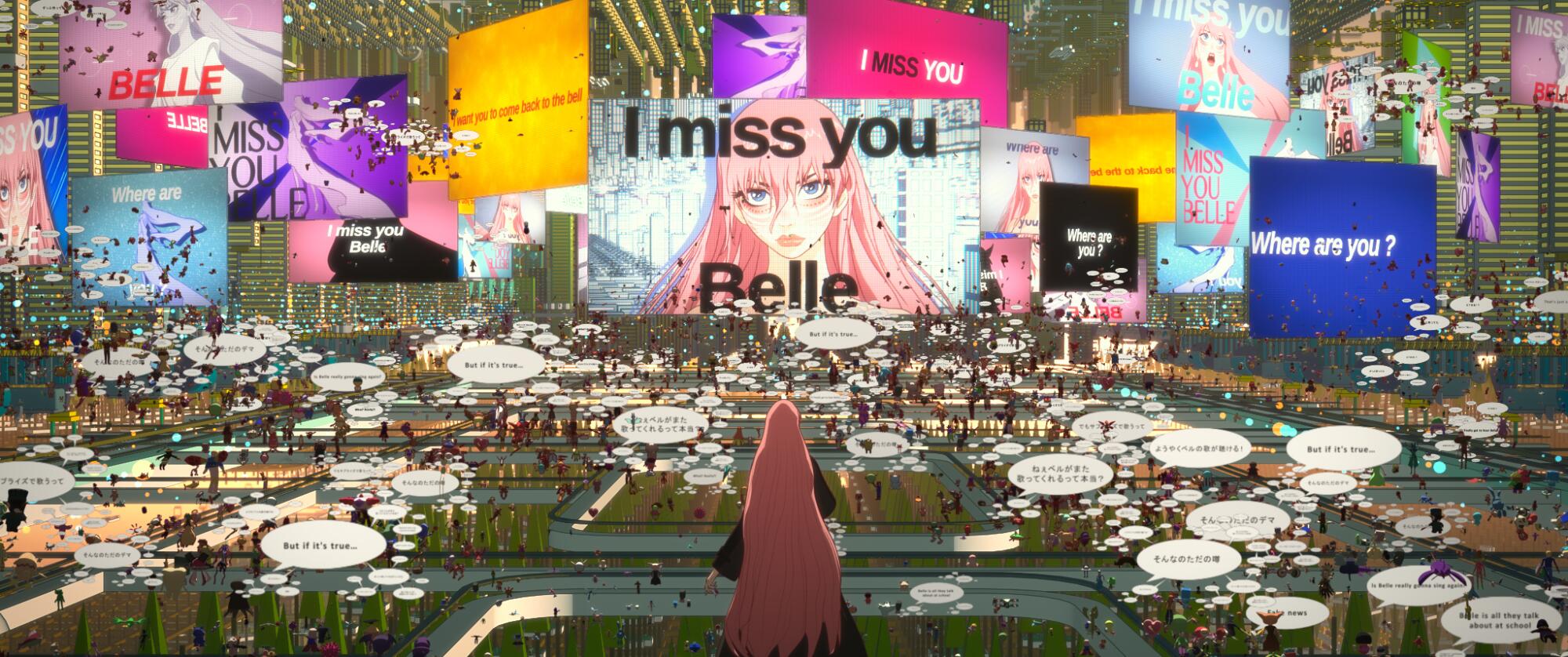
There’s a negative side to this phenomenon, online bullying and harassment. Yet, your work, it seems, tries to approach all the topics related to the internet with an edge of hopefulness, rather than with a fatalistic lens.
I wanted to make sure we were depicting a rather positive side of the internet. To your point, there is definitely a lot of toxicity, and I wanted to make sure that side of the internet was also represented in the movie because it’s important to show the reality of what is happening. In spite of that, overall, I believe it has the potential to shift in a more positive direction. Whenever there’s a really groundbreaking new technology or innovation, there’s a tendency to, especially from adults, interpret it in a much more negative light.
Other movies that deal with internet culture tend to paint a much more dystopian picture of how the internet is somehow stripping us of our humanity, but innovation like this, I don’t think can be stopped. If you go all the way back into the history of film, and look at Charlie Chaplin’s “Modern Times,” just because it painted the Industrial Revolution and mass producing in a negative light doesn’t mean we were not going to go through with this revolution. Similarly, you can’t take the smartphones from these kids and expect them to go back to the farm and grow vegetables.
In that regard, we must acknowledge and learn how to approach this correctly and live with it. Knowing that this next generation is going to have to live in this new reality, why paint such a negative picture of it? We can definitely focus on the more positive sides that it has to offer and help push us forward.
More to Read
Only good movies
Get the Indie Focus newsletter, Mark Olsen's weekly guide to the world of cinema.
You may occasionally receive promotional content from the Los Angeles Times.
